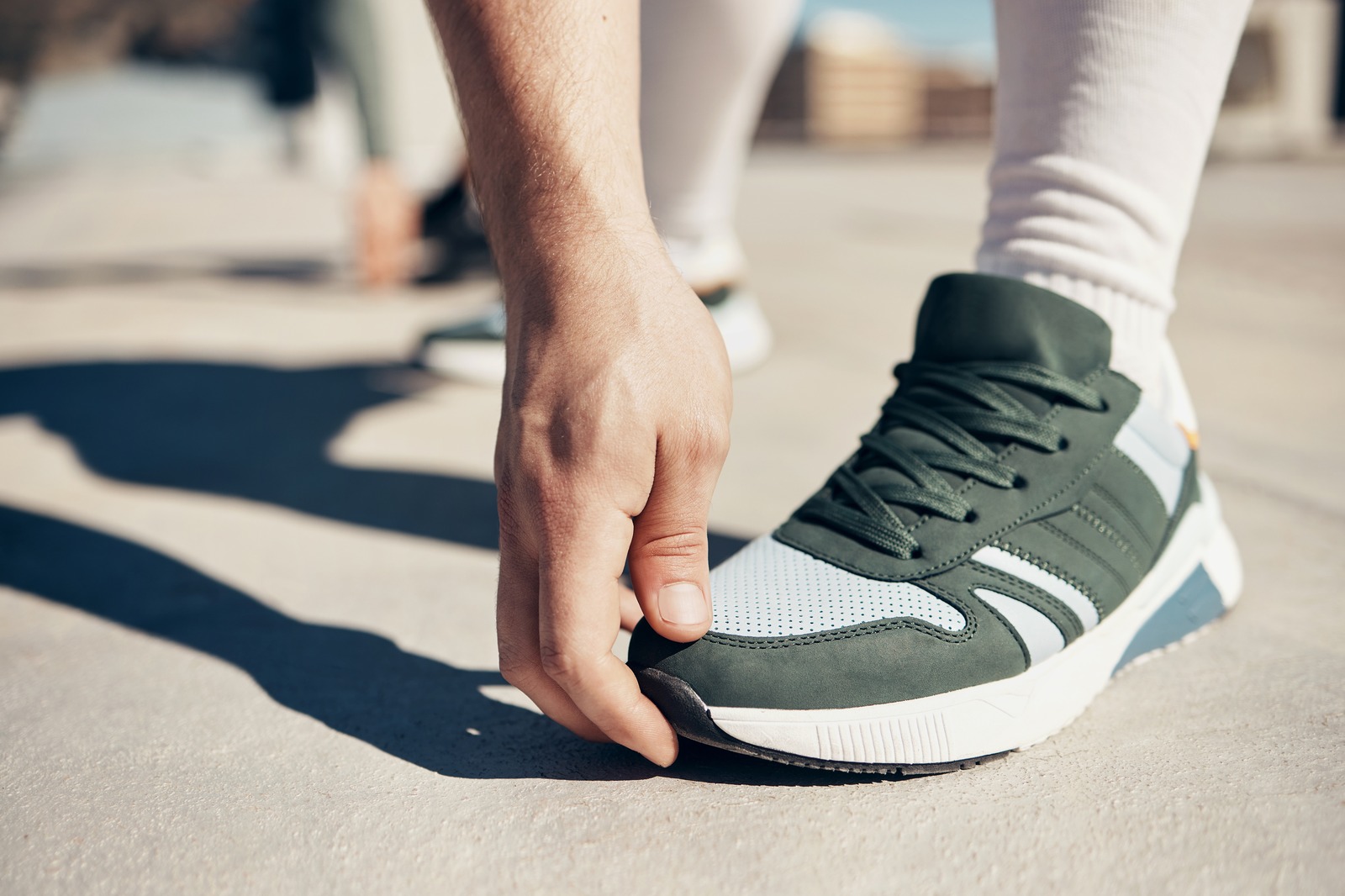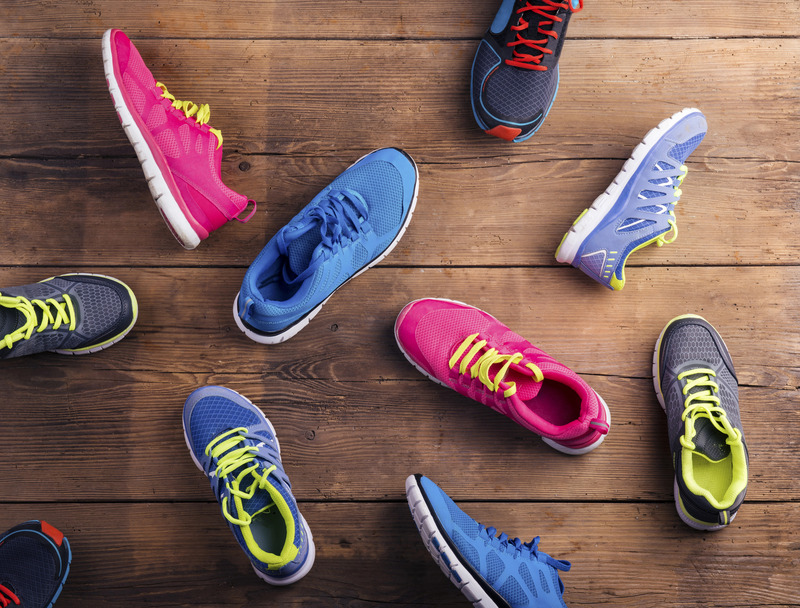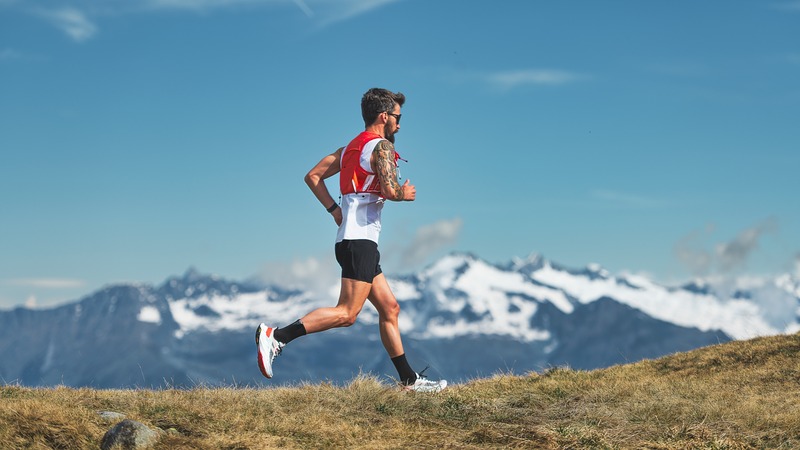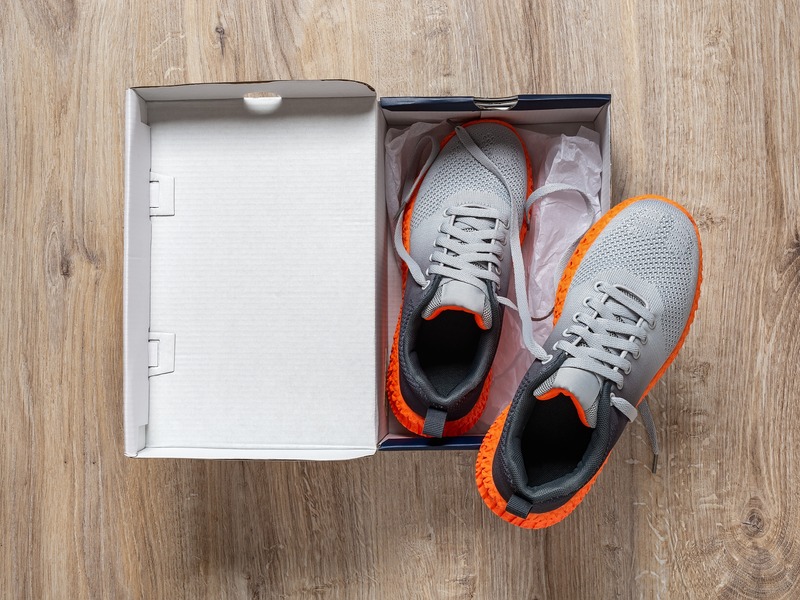The Toe Box: Why It Matters in Your Running Shoes
July 19, 2024

When you buy through links on our site, we may earn an affiliate commission.
There's no better feeling than striding confidently down the road, arms pumping, feet striking the pavement in perfect rhythm. But not all runners feel strong and fast on their runs. Some of you are out there wincing slightly with every step as your toes push up against the front of your shoes. Others are left nursing blisters after each run from friction spots in your forefoot.
If that sounds like you, you could be struggling with a less-than-ideal toe box fit. While the conversation around running shoes is naturally steered toward cushioning and stability features, the toe box of a running shoe shouldn't be disregarded. In fact, it's a vital aspect of not just your comfort on runs but also your running economy and performance.
With that in mind, let's explore running shoe toe boxes in more detail and explain why they should be an important consideration in your next running shoe purchase.
What is a Toe Box on a Running Shoe?
The toe box on a running shoe is the front portion of the shoe that extends forward from the bottom of the laces (around where the ball of your foot should be) across the entire surface area of the upper until the toe cap (if there is one) or the end of your running shoe.
The toe box is a little bit of a misnomer, considering it houses a far larger proportion of your foot than merely the toes. However, it's the toes that tend to suffer if the fit is wrong.
While toe boxes generally have an oblong rounded shape, they can vary in specific dimensions. Some offer a wider platform to allow for natural toe splaying and swelling during a run. Others have a more curved form to suit narrower feet. An ideal toe box matches the shape of your forefoot, with enough wiggle room for your toes to move freely without excess space.
The Importance of a Proper Toe Box Fit
If you can land on a pair of running shoes with a great toe box fit for your unique feet, you can avoid unnecessary pain, increase your performance, and, most importantly, enjoy your runs. Get it wrong, however, and you can face running miles in avoidable but debilitating pain.
Here's why it pays to match up with a shoe offering you a decent toe box fit.
Improved Comfort
When toe boxes fit properly, with enough room for swelling and natural toe splaying as you run, you avoid painful blisters, blackened nails, and irritation. You experience less fatigue and can log more miles feeling great.
Enhanced Performance
The right toe box room also equates to better running efficiency. With space to leverage toe power, you can make the most of every foot strike and toe-off while improving your overall balance.
Less Chance of Injury
Studies have shown that toe boxes play a vital role in injury prevention. For instance, research has found that making toe boxes 8mm higher and 3mm longer reduces ground reaction forces during foot strikes and significantly improves big toe (hallux) health. Having adequate space also allows you to carry out your natural biomechanical running motion without compensating in any way, helping to keep other muscular injuries at bay.
Signs Your Toe Box Doesn't Fit Properly
The first step in getting the correct toe box fit is recognizing when it's not working. It's hardly rocket science – if your toes hurt when you run, then you'll likely need to change to a different toe box design. All the same, let's quickly walk you through the tell-tale signs that you need to make an adjustment.
If Your Toe Box is Too Tight
If your toes feel cramped or hit the front of the shoe, especially when running downhill, you may be at risk for black toenails and blisters. Constant pressure can also contribute to the development of bunions and hammer toes over time. If you're developing these symptoms, switching to a different running shoe is probably wise.
If You've Got Too Much Room
An overly spacious toe box can be just as problematic. When your feet slide around inside the shoe, it can disrupt your natural stride and increase the risk of blisters from friction. This instability may also lead to an increase in ankle sprains. If your feet feel as though they are sliding around, then your toe box may be too wide.
How to Assess Your Current Running Shoes
Try this simple test to check if the toe box of your current running shoes provides adequate space:
- Remove the insoles from your running shoes.
- Place the insoles on the floor and stand on them. Try to splay your toes a little to mimic a footstrike.
- Look down at your feet. If any part of your foot hangs over the edges of the insole, your toe box may be too narrow. If the gap around your feet is too large, you may need to go narrower. Remember, the ideal toe box should give you enough room to naturally splay your toes without leaving you with excess movement.
Toe Box Considerations for Different Types of Running Shoes
When buying your next pair of running shoes, you'll notice that certain shoes have fairly significant differences in the toe box characteristics, which are usually dependent on their intended use case.
For your daily mileage shoes, prioritize comfort and ample room for natural foot movement and even slight swelling if you often run long distances. Brands know this and, as a result, offer more choice in foot widths in this shoe category than others (such as E, 2E, 4E, etc.) to help you find the best toe box fit.
By contrast, you'll struggle to find extra-wide speed shoes or racing flats since they're designed for performance, not comfort. It's still important to ensure you're not uncomfortable when wearing these shoes, but just don't expect the same freedom for your toes.
To give you an example of these differences, the Nike Pegasus and Asics Gel Kayano both offer toe box widths of over 100mm (based on standard-width shoes). But lightweight racers such as the Hoka Rocket X or the Asics Metaspeed have toe box widths of only 89mm and 92mm, respectively.
Choosing the Right Toe Box for Your Feet
When shopping for your next pair of running shoes and trying to find a good toe box fit, there's no substitute for going to a local store and simply trying on various makes and models of running shoes. While you might already know that you want a neutral cushioned shoe, for example, there's no way to tell what works for you regarding your forefoot and toes without experiencing it firsthand.
So take each pair for a spin in the store. And actually run, not just walk. You must assess how they fare when splaying out your toes as part of your push-off. Models that aren't right will reveal themselves to be a poor match pretty quickly, so it shouldn't take you long to whittle down to a few choices that work for you.
If you're really struggling to find comfortable shoes in the toe box area, you might want to look at brands offering “foot-shaped” toe boxes that aim to more closely mimic our anatomical foot shape than most standard running shoe designs. Utah-based Altra is undoubtedly leading the way in this respect, with running shoes such as the Paradigm utilizing this design, but other brands are following suit.
However, if you've found a few that are close but not quite perfect, don't forget your sock choice can have a significant impact. Thin socks can create extra space in a snug shoe, while thicker socks can improve the fit of a slightly loose shoe. Experimenting with different sock thicknesses will allow you to fine-tune your shoe fit for optimal comfort.
Don't Overlook the Toe Box – It Could Hold the Key to More Comfortable Running and Unlocked Performance
While the toe box may never top the list of priorities when choosing a running shoe, it can be the difference-maker in choosing the right pair for you. Rather than blisters and black nails, you can log mile after mile of enjoyable running with a toe box that accommodates your unique foot shape.
Remember, finding the perfect fit is about balancing comfort, support, and functionality. As you search for your ideal match, don't shy away from exploring various brands and models. Even experimenting with different sock thicknesses can make a surprising difference in how a shoe feels. Take your time with this process, trying on multiple pairs if necessary – your feet will thank you for the extra effort.
Once you've discovered that perfect pair of running shoes, your journey isn't quite over. Before purchasing, consider using RunningShoeDeals.com to ensure you're getting the best value. Our platform diligently searches numerous retailers and their current promotions, helping you secure the most competitive price for your chosen shoes. With the right fit at the right price, you'll be well-equipped for countless comfortable miles ahead.


